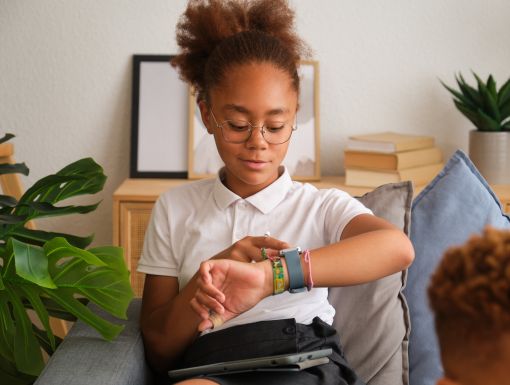
How to Talk to Your Kids About Scary News: 9 Tips From a Psychologist
Children today are exposed to more information than at any other time in history. This reality has hit especially close to home for Louisiana in the wake of the New Year's attack in New Orleans. Our children can access news and media not only through television, but through several forms of social media on their phones and tablets.
Social media increases the amount of media content they have access to and lessens the control parents have over what their children see. It also exposes children to a rawer form of media, including firsthand accounts, videos and pictures - something particularly challenging when the events they're seeing happened in places they know and recognize.
While children may be able to maintain some emotional distance from troubling events they see happening far away, when tragedy strikes in familiar places -- their own city, near their school, or where their parents work -- it can feel overwhelmingly real and frightening.
This unprecedented access to information comes in the midst of ongoing challenges: acts of terrorism both local and global, war, refugee crises, violent crime, and political and social conflict here and abroad. It's not surprising then that children in our community and beyond are reporting more anxiety, and parents are asking with increasing urgency for recommendations for talking to their children about scary media, especially when that media hits so close to home.
Monitor your own emotional reaction to the news. Children are experts at picking up on the emotions of adults around them, and no emotions are more impactful to them than those of their parents. It’s OK to tell your child if news makes you sad, but ensure that you’re calm and collected when you do so.
How to talk to your kids about scary news:
- Monitor your own emotional reaction to the news – Children are experts at picking up on the emotions of adults around them, and no emotions are more impactful to them than those of their parents.
- Limit their exposure to the news – We may have less control over what our children can access, but we do still have some. Think about your child’s developmental level and maturity to determine what kind of content is appropriate. Set limits on screen time, use parental filters and restrict mature content.
- Check in with kids about what they are hearing – Ask your children questions to assess what they are seeing in the media. Being proactive allows you the opportunity to help them process and understand it from the beginning. Some parents may worry that bringing up sensitive topics will create anxiety where none existed, however your questions are unlikely to be the first time they are hearing about these topics. Putting it out in the open allows you to process it as a family. If a child is disinterested or doesn’t want to talk about it, don’t push.
- Clear up misunderstandings – Having asked what they already know, you will be in position to correct any misunderstandings they have about what is happening.
- Answer questions truthfully – Tell them the truth when they ask questions, but do not share more information than is necessary to answer their question. Consider their developmental level when deciding what to share.
- Ask open-ended questions about their thoughts and feelings – “How do you feel about that?” and “What do you think about that?” will help them process and give parents a good sense of how they are coping and what they are worried about.
- Provide reassurance and a sense of safety – Address their specific fears and explain why you have confidence they are safe. However, continue to be honest and do not dismiss what they are afraid of. For events that may be realistic concerns, such as natural disasters and illness, talk confidently about how your family can be prepared and trust in your preparation.
- Fictional media – Young children can have trouble differentiating between fiction and reality. Scary movies, videos and games can seem real to children and can lead to anxiety and nightmares. Start by limiting access to scary movies and video games for young children; preview them first if necessary. Remind them that it is make believe and designed to be scary.
- Keep monitoring after the conversation is over – By checking in, you open the line of communication and provide a safe place for kids to talk about feelings. Look for changes in their behavior that may indicate anxiety or stress and consult a behavioral health provider if you are concerned.
Learn more about child psychologist Justin Carreras, PhD.


